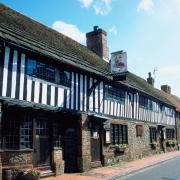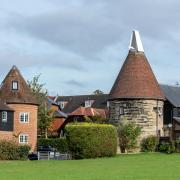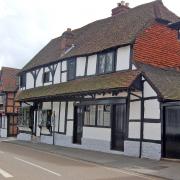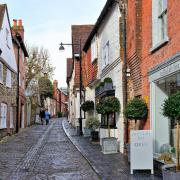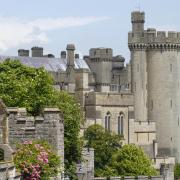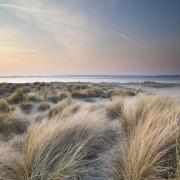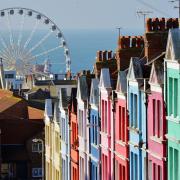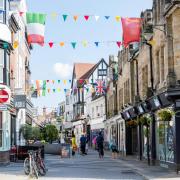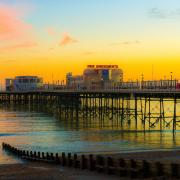This April marks the 100th anniversary of the RAF. Aviation historian Ken Delve uncovers the hidden histories of Sussex airfields. Article first published in April 2018
On 1 April 1918 the Royal Flying Corps became the Royal Air Force (RAF), making this month the 100th anniversary of the RAF. Sussex had a major part to play in aviation history, being of key strategic importance during both World Wars. Interestingly, some of those airfields are still extant, such as Shoreham, while others – Ford, for example, which was one of our most important airfields – closed shortly after World War II.
Sussex had 14 operational airfields in World War II, some with previous World War I history, many having been in service since the early 1940s, and some constructed as part of the air build-up for D-Day 1944. A few survived into the Cold War period, such as Tangmere – perhaps the most famous of the county’s airfields.
World War I saw Sussex providing flying training from airfields such as Eastbourne, Rustington, Tangmere and Shoreham, while other airfields such as Southbourne were assigned this use but not completed. Eastbourne also had an aircraft production facility – the Eastbourne Aviation Company used a site on the Crumbles and built types such as the BE2c and Avro 504. Sussex’s airship station was at Polegate, which opened in July 1915 for anti-submarine patrols. For part of the war Polegate operated out-stations at Slindon and Upton, while Telscombe Cliffs had a similar role, but for aircraft rather than airships.
Tangmere operated as a training base from spring 1918 to the end of World War I. It was provided with extensive facilities for a planned role with Handley Page bombers. After closing in 1919 it was kept on the books and re-opened in 1925, the first unit, 43 Squadron, arriving with its Gamecock fighters in November 1927. Tangmere was a fighter station and this remained its role throughout its RAF history. By the Battle of Britain Tangmere also housed a Sector Operations Room and controlled satellite airfields, the main one being Westhampnett. The airfield suffered attacks in the Battle of Britain, the most effective taking place on 16 August 1940. It caused damage to hangars, buildings and the airfield surface, as well as killing 13 people and destroying more than ten aircraft.
Like all RAF fighter bases, Tangmere turned to the offensive from 1941. The rotation of squadrons continued over the next two years and it was always a busy airfield, the main types being the Spitfire and Typhoon. Post-war, Meteors dominated the airfield for a decade and one of them gained Tangmere the first of its clutch of speed records. On 7 September 1946, Group Captain EM Donaldson achieved 616 mph in a Gloster Meteor IV, a record beaten on the same date in 1953 when Neville Duke set a new record of 727.63 mph in the prototype Hawker Hunter flown from Tangmere. Fighter types were replaced by the Canberras of Signals Command, who left in 1963. This left only the Search and Rescue helicopters and the gliders. The site was put up for auction in 1979.
Westhampnett was associated mainly with Spitfires, with numerous squadrons spending time here, flying defensive ops (Battle of Britain and later against V-weapons), and offensive ops, including a Spitfire period by the American 31st Fighter Group. The airfield closed in 1946 and parts of it became the Goodwood motor racing circuit.
Shoreham has had a long aviation history, from opening as a civil airport in June 1911, through military periods in both wars, and continuing today as a civil airport. It was requisitioned in August 1914 and its main user was No 3 Training Squadron, which trained a great many pilots over a four-year period. Other units also used Shoreham, but it closed in 1921. A new airfield was established in 1926 by the Southern Aero Club and in the late 1930s RAF pilots were trained at Shoreham. The airfield had diverse use during the war, from fighter detachments supporting operations such as the August 1942 Dieppe Raid, to Air Sea Rescue units, and units supporting the Anti-Aircraft Practice Camp (AAPC); this latter gave the airfield a new role – training RAF Regiment gunners with Lysanders providing the banner towing.
Merston was the earliest wartime new airfield built in Sussex, having been surveyed in 1939 as a satellite for Tangmere. It opened in spring 1941 and Spitfire squadrons took up residence, flying offensive sweeps over the continent. The airfield was used by mainly Spitfire and Typhoon units, the most intensive period being around D-Day in June 1944, a period when Sussex was at the forefront of RAF operations with numerous temporary airfields.
The Advanced Landing Grounds (ALGs) were constructed on sites that had been surveyed in late 1942/early 1943 in recognition of the need for simple fighter bases as close as possible to enemy territory for use in the build-up to, and invasion of, occupied Europe. Appledram was typical. This area of farmland was requisitioned in December 1942 and an RAF Airfield Construction Unit arrived on site in February 1943. Construction work comprised removal of hedges and obstructions and the laying of two tracked runways in the shape of a cross – the standard arrangement for these ALGS – and was completed in a matter of weeks. Appledram was one of the first batch of airfields constructed in this way and opened on 2 June 1943.
The Sommerfeld Track runways were tested by the three Typhoon squadrons of No 124 Airfield. Personnel lived in tents and aircraft were dispersed around the airfield. The Typhoons flew their first missions from here on 12 June and over the next two weeks the airfield proved itself capable of supporting operations. The test successful, the squadrons moved out at the beginning of July and Appledram went quiet to await its role in the invasion of Europe. April 1944 saw the arrival of a Spitfire Wing, and Appledram entered a four-month period of intensive ops; that November the airfield was de-requisitioned and returned to farmland.
It was a similar story at the other Sussex ALGs of Bognor, Chailey, Coolham, Deanland, and Selsey: construction followed by waiting for the invasion period, and then intensive ops by various squadrons for a few months, followed by abandonment. Hammerwood was slightly different, as it was used by Auster of Air Observation Post squadrons rather than fighter types.
Ford was one of the most important airfields in Sussex during World War II because of the role of one of its units: the Fighter Interception Unit (FIU) played a key role in the development of night fighter tactics. Changing hands between the Fleet Air Arm and the RAF on a regular basis, Ford was home to many units, both operational and training, during its career.
A late development in World War I, Ford Junction only opened in 1918 and was used by both RAF and American squadrons to work-up and deploy to France. It closed in 1920 but was later used by the Sussex Aero Club, prior to being requisitioned in 1937. Various RAF and Navy operational and training units used Ford, and in 1946 it entered its final phase under Fleet Air Arm control, although Flight Refuelling Ltd (Alan Cobham) also returned to part of the site.
Ken Delve served in the RAF as aircrew from 1975 to 1994. He is an aviation researcher and author and is a trustee of the RAF Heraldry Trust. The trust is a registered charity whose aim is to create a permanent artwork record of all RAF unit badges – for more information, visit www.rafht.co.uk. Ken can be contacted at historian@rafht.co.uk.
World War I
The Landing Grounds listed below were only active during World War I. There were many other temporary fields used by the Home Defence units, and additional information is always welcome:
• Eastbourne
• Goring by Sea
• Polegate
• Rustington
• Southbourne
• Telscombe Cliffs
What to see?
Some of the old airfields have significant traces surviving, and some have memorials to the units and people who served. There are no active RAF airfields, but some airfields are now civil flying fields. The Sussex aviation museums include the superb Tangmere Military Aviation Museum, Shoreham Aircraft Museum and the Wings Museum.
Sussex airfields
The list of airfields is taken from the author’s Military Airfields of Britain series of books. The list only shows flying locations:
• Appledram
• Bognor
• Chailey
• Coolham
• Cowdray Park
• Deanland
• Ford
• Funtingdon
• Hammerwood
• Merston
• Pulborough
• Selsey
• Shoreham
• Tangmere
• Westhampnett
• Ford, Shoreham and Tangmere had World War I and Cold War use, as well as World War II










